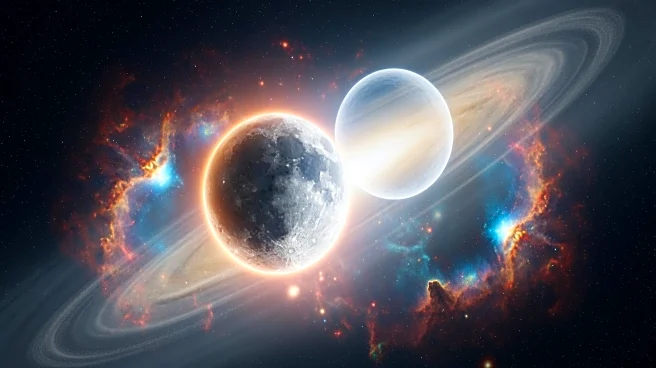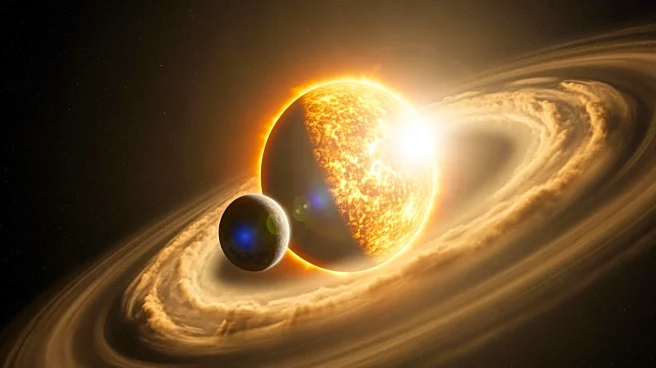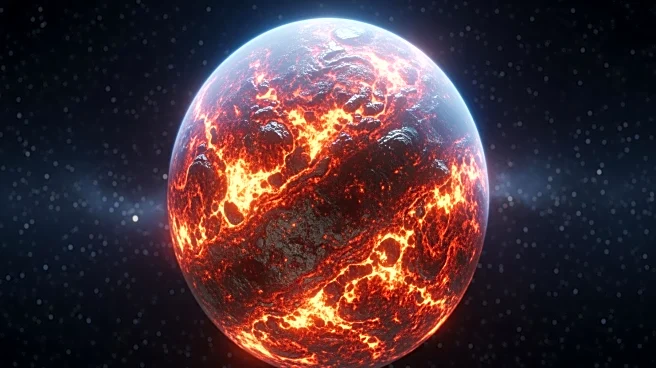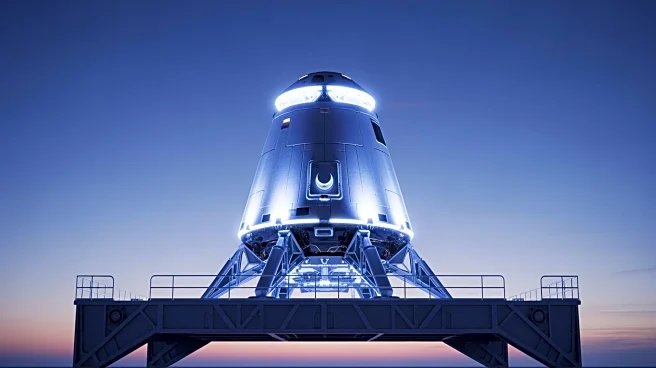What's Happening?
Recent research from the Max Planck Institute for Solar System Research suggests a new theory regarding the Moon's formation. The study posits that Theia, a Mars-sized celestial body, may have formed alongside
Earth in the inner Solar System. This challenges previous beliefs that Theia originated from a different part of the Solar System. The collision between Earth and Theia, which occurred approximately 4.5 billion years ago, is believed to have resulted in the Moon's creation. The research highlights the iron content in Earth's mantle as evidence, suggesting it was influenced by Theia's composition. This new perspective on the Moon's origin is based on chemical analyses of rocks from both Earth and the Moon.
Why It's Important?
This new theory could significantly alter our understanding of planetary formation and the early Solar System. If Theia and Earth were indeed neighbors, it suggests a more complex interaction between celestial bodies during the early stages of the Solar System. This could impact scientific models of planetary formation and evolution. The findings may also influence future research directions in planetary science, potentially leading to new insights into the formation of other celestial bodies. Understanding the Moon's origin is crucial for comprehending Earth's geological history and the dynamics of celestial collisions.











